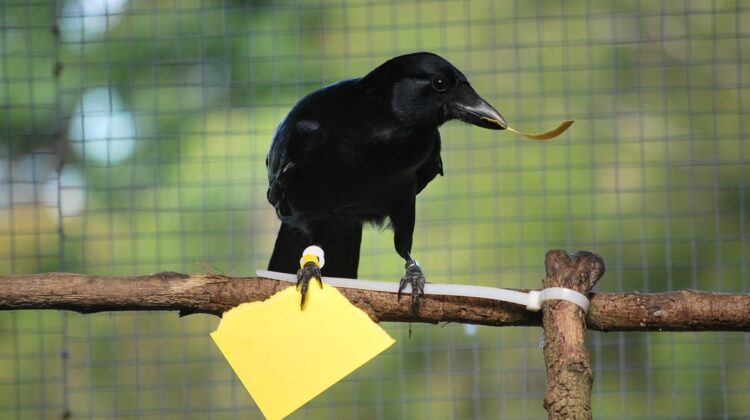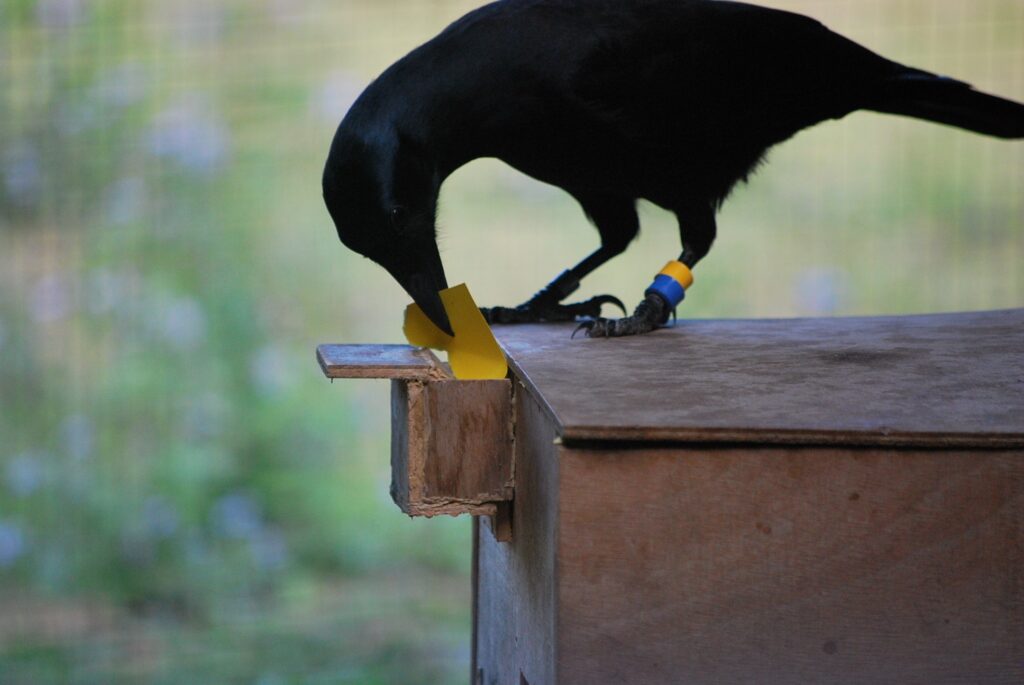
Crows from New Caledonia produce tools that are arguably more sophisticated than those made by any other animal outside humans. Crows appear to be able to learn from one another, and their technology may even be developing, but it has baffled scientists how such solitary animals without language can communicate with one another. Corvus moneduloides are very lonely animals, but a recent study demonstrates that despite this, they are capable of learning new tool-making skills and using them from memory in a way that has never before been observed in animals other than ourselves and our ancestors.
New Caledonian crows are unique among the amazingly intelligent corvids in general. They have taken to shaping wire with enthusiasm, much as they have taken to bending twigs and tearing leaves to construct hooked tools to retrieve grubs in the wild. If you’re still not impressed, watch this video and consider how many people could complete a consecutive challenge so rapidly.
Since they don’t seem to imitate one other, even in captivity, scientists are baffled as to how they learn some of these talents. Dr. Sarah Jelbert of the University of Auckland has demonstrated that these crows can learn to construct something similar from memory after being shown a novel tool and taught its effectiveness. She suggests in Scientific Reports that crows pick up skills through seeing their parents or by finding things that have been abandoned by others, and they occasionally improve on these tools, resulting in the development of technological complexity.
Eight crows were taught a skill by Jelbert that they would never have learned in the wild. She designed a crow vending machine that gave them food in exchange for inserting pieces of colored paper (portraits of reigning monarchs or notable persons not required).
Jelbert offered the crows an impractically huge sheet of colored paper once they realized that they could use paper as food. Four of the crows tore the paper into pieces that could fit into the machine without needing any prompting. The birds were then given sheets of two different colors, and they were only given rewards when they turned one of the sheets into money. All birds, save one, immediately picked up the rule of only using the proper colour paper.
After preparing her students in this way, Jelbert used the real exam, giving them two different sized pieces of paper, only one of which was rewarding. Jelbert offered the birds a sizable piece of cardboard once they had mastered using paper just of the required size.
The birds eagerly began torn the card into pieces that were roughly the size they had previously been taught to use, and then inserted them.
Even without a pattern to compare her work to, one crow by the name of Emma went to great measures to get the sizes just right, shredding pieces twice until they were very similar in size to the ones she had been taught to use.
Although this achievement may not seem as spectacular as the sequential thinking seen in the previous video, it is still important to consider the steps necessary to get there. The crow must understand that a certain piece of paper is exceptional, be able to recall that size precisely, and be prepared to make the effort necessary to tear the paper up properly without having opposable thumbs. Even more perfectionism than necessary was displayed by Emma.
The geographical variations in tool manufacture across New Caledonia are explained by Jelbert’s work. There is evidence that they are changing and that they are apparently passed culturally. We have never before observed this behavior in non-human animals, according to Jelbert and her coworkers, which they refer to as “mental template matching.”
However, the reason why the birds of two relatively small Pacific Islands can perform tasks that humans can only elsewhere is still a mystery.


Leave a Reply